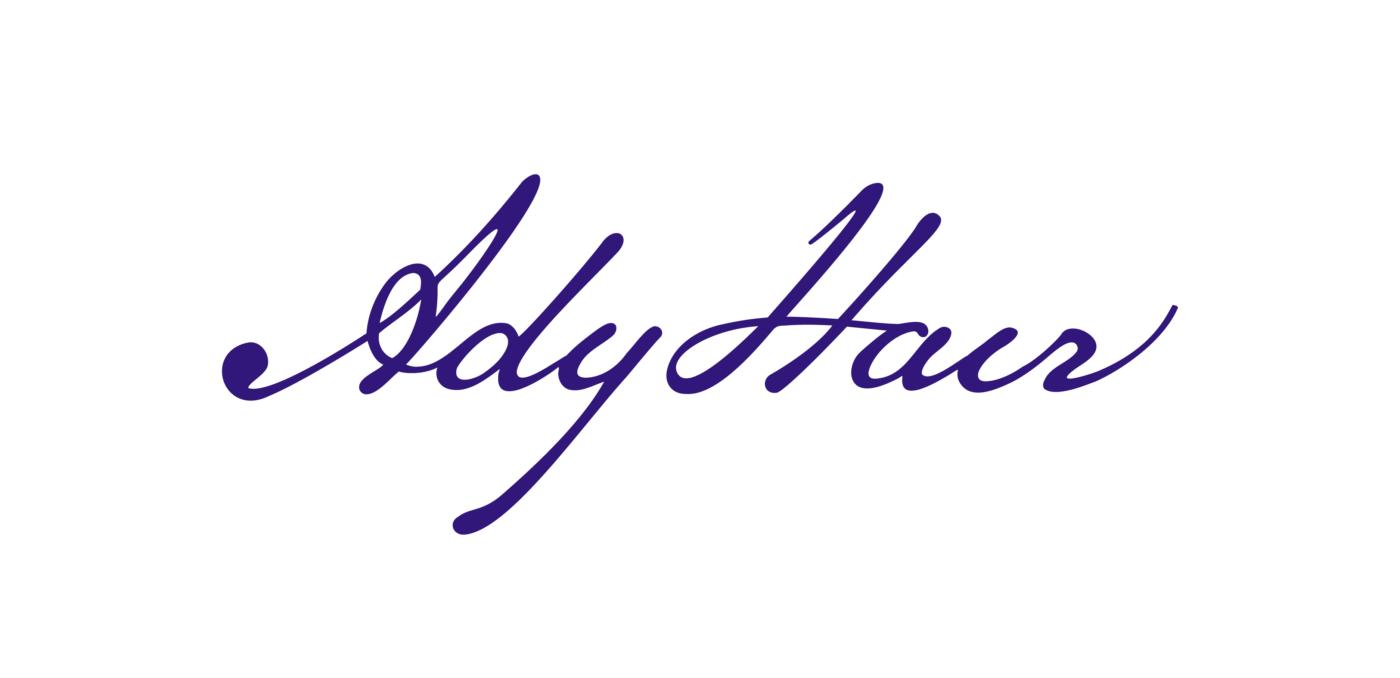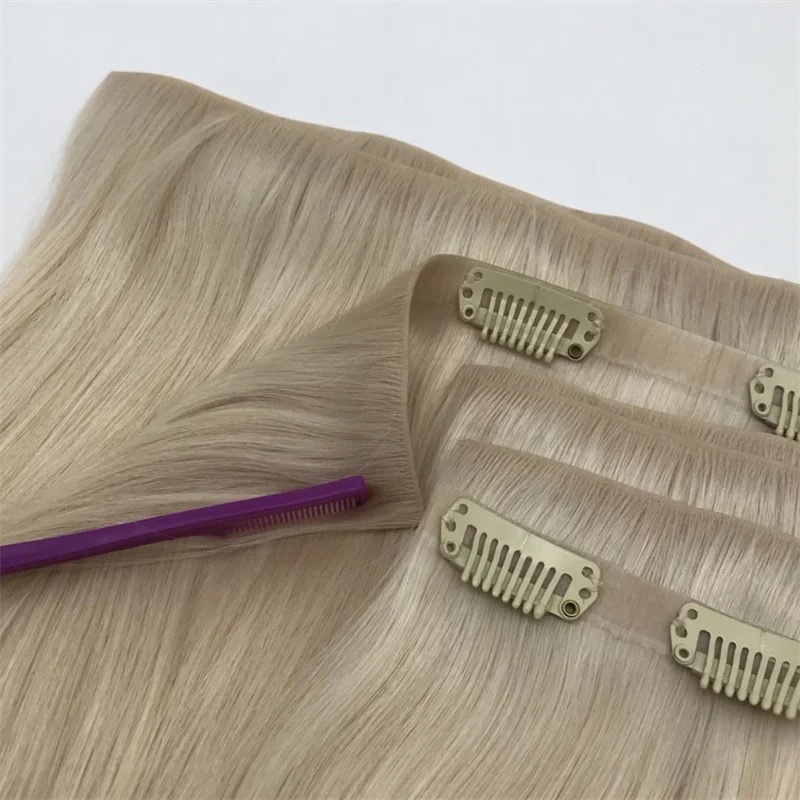Hair blog
The Pros and Cons of Clip-In Hair Extensions: A Guide For Beginners
Clip-in hair extensions have become increasingly popular for their versatility, ease of use, and non-permanent nature. They are an excellent option for those looking to add length, volume, or even color to their hair without making a long-term commitment. This comprehensive guide will cover everything you need to know about clip-in hair extensions, including their advantages and disadvantages, application tips, care instructions, and much more.
Understanding Clip-In Hair Extensions
Clip-in hair extensions are wefts of hair that are attached to small, secure clips. These wefts can be made from either human hair or synthetic fibers. Human hair extensions are generally preferred due to their natural appearance and ability to be styled with heat tools, whereas synthetic extensions are more affordable but less versatile.
Types of Clip-In Hair Extensions
- Human Hair Extensions: These are the most natural-looking and durable type of clip-in extensions. They can be colored, curled, straightened, and styled just like your natural hair.
- Synthetic Hair Extensions: Made from artificial fibers, these extensions are more budget-friendly. However, they are less versatile because they cannot withstand heat styling and may not blend as seamlessly with natural hair.
Advantages of Clip-In Hair Extensions
1. Easy to Use
Clip-in hair extensions are designed for easy application and removal. You don’t need professional help to put them in or take them out, making them perfect for anyone new to hair extensions.
2. Versatile Styling
Clip-ins allow you to experiment with different hairstyles, lengths, and volumes. You can switch up your look for a special occasion or simply change your everyday style without a permanent commitment.
3. Non-Damaging
Unlike other hair extension methods that involve glue, tape, or weaving, clip-ins do not damage your natural hair. They are a safe option for enhancing your hairstyle.
4. Cost-Effective
Clip-in hair extensions are a more affordable option compared to semi-permanent methods. They are reusable, making them a cost-effective choice over time.
5. Quick Transformation
With clip-ins, you can achieve a dramatic change in minutes. They are ideal for anyone needing a quick hair makeover.
Disadvantages of Clip-In Hair Extensions
1. Temporary Nature
Clip-in extensions need to be removed every night, which can be time-consuming for some. They are not a permanent solution and require daily maintenance.
2. Potential for Discomfort
Improperly applied clip-ins can cause discomfort or even headaches. Ensuring the clips are securely fastened and not pulling on your natural hair is essential.
3. Limited Wear Time
While convenient for short-term use, clip-ins are not designed for long-term wear. Wearing them for extended periods can lead to tangling and stress on your natural hair.
4. Visibility Issues
If not applied correctly, the clips may be visible, especially in fine or thin hair. Proper placement and styling are crucial to ensure they blend seamlessly.
5. Quality Variations
The market is flooded with varying qualities of clip-in extensions. It’s essential to invest in high-quality extensions to avoid a fake or unnatural appearance.
How to Apply Clip-In Hair Extensions
Step-by-Step Guide
- Prepare Your Hair: Start with clean, dry hair. Brush it thoroughly to remove any tangles.
- Section Your Hair: Divide your hair into sections, starting from the bottom and working your way up. Use hair clips to secure the sections.
- Attach the Extensions: Open the clips on the extensions and snap them close to your roots, ensuring they are secure. Start with the bottom sections and work your way up.
- Blend and Style: Once all the wefts are attached, blend them with your natural hair using a brush or comb. Style as desired using heat tools if the extensions are human hair.
Caring for Clip-In Hair Extensions
Washing
Wash your extensions after every 15-20 wears or when they become dirty. Use a gentle shampoo and conditioner specifically designed for hair extensions. Avoid products with sulfates or alcohol, which can dry out the hair.
Drying
After washing, gently squeeze out excess water and pat dry with a towel. Avoid rubbing, which can cause tangling. Allow the extensions to air dry on a flat surface. Do not use heat to dry synthetic extensions.
Brushing
Use a soft-bristle brush or a wide-tooth comb to detangle the extensions. Start from the ends and work your way up to avoid pulling and breaking the hair.
Storage
Store your extensions in a cool, dry place. Use a hair extension storage case or a box to keep them protected from dust and tangling.
Avoiding Heat Damage
For synthetic extensions, avoid using heat styling tools. For human hair extensions, always use a heat protectant spray before styling with heat tools.
Styling Tips for Clip-In Hair Extensions
Blending
To ensure your extensions blend seamlessly, choose extensions that match your hair color and texture. You can also layer your natural hair and extensions for a more natural look.
Volume
For added volume, tease your natural hair at the roots before attaching the extensions. This provides a base for the clips to hold onto and creates a fuller appearance.
Curling
To create curls that blend naturally, curl your extensions before attaching them. This allows you to match the curl pattern of your natural hair more easily.
Braiding
Clip-in extensions can be used to create intricate braids and updos. Attach the extensions where needed to add length and volume to your braids.
Ponytails and Buns
For a voluminous ponytail or bun, attach the extensions around the base of your natural hair. This adds fullness and length, making your style more dramatic.
Common Issues and Solutions
Tangling
To minimize tangling, brush your extensions regularly with a soft-bristle brush. Avoid sleeping with your extensions in to prevent matting. Store your extensions properly to avoid knots and tangles.
Shedding
Handle your extensions gently, especially when brushing and washing. Avoid using harsh chemicals or products that can weaken the hair. Ensure the clips are attached securely to avoid pulling on the extensions.
Color Matching
For a seamless blend, it’s crucial to match the color of your extensions to your natural hair. If you’re having trouble finding the perfect match, consider getting custom-colored extensions from a professional. Use temporary hair color sprays or powders to adjust the color of your natural hair or extensions.
Professional vs. DIY Application
While clip-in extensions are designed for easy at-home application, there are benefits to having them applied by a professional, especially for special occasions or complex styles. A professional can ensure the extensions are blended perfectly and styled to suit your needs.
Conclusion
Clip-in hair extensions are a fantastic option for anyone looking to enhance their hairstyle without the commitment or potential damage of more permanent extensions. By understanding the different types, benefits, and proper care techniques, you can enjoy beautiful, voluminous hair that looks natural and stays healthy. Whether you’re preparing for a special event or just want to switch up your everyday look, clip-in hair extensions offer a versatile and convenient solution.

